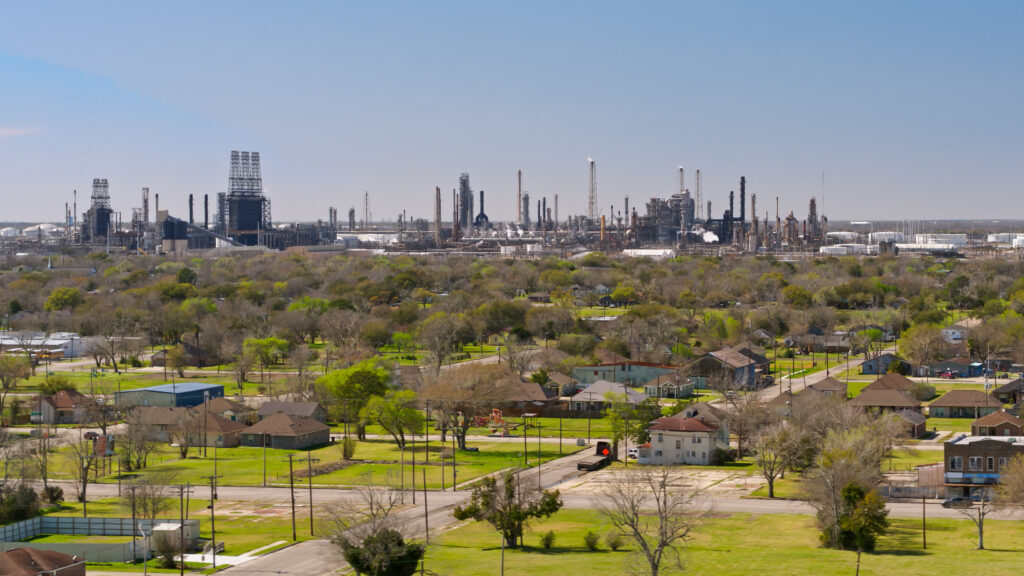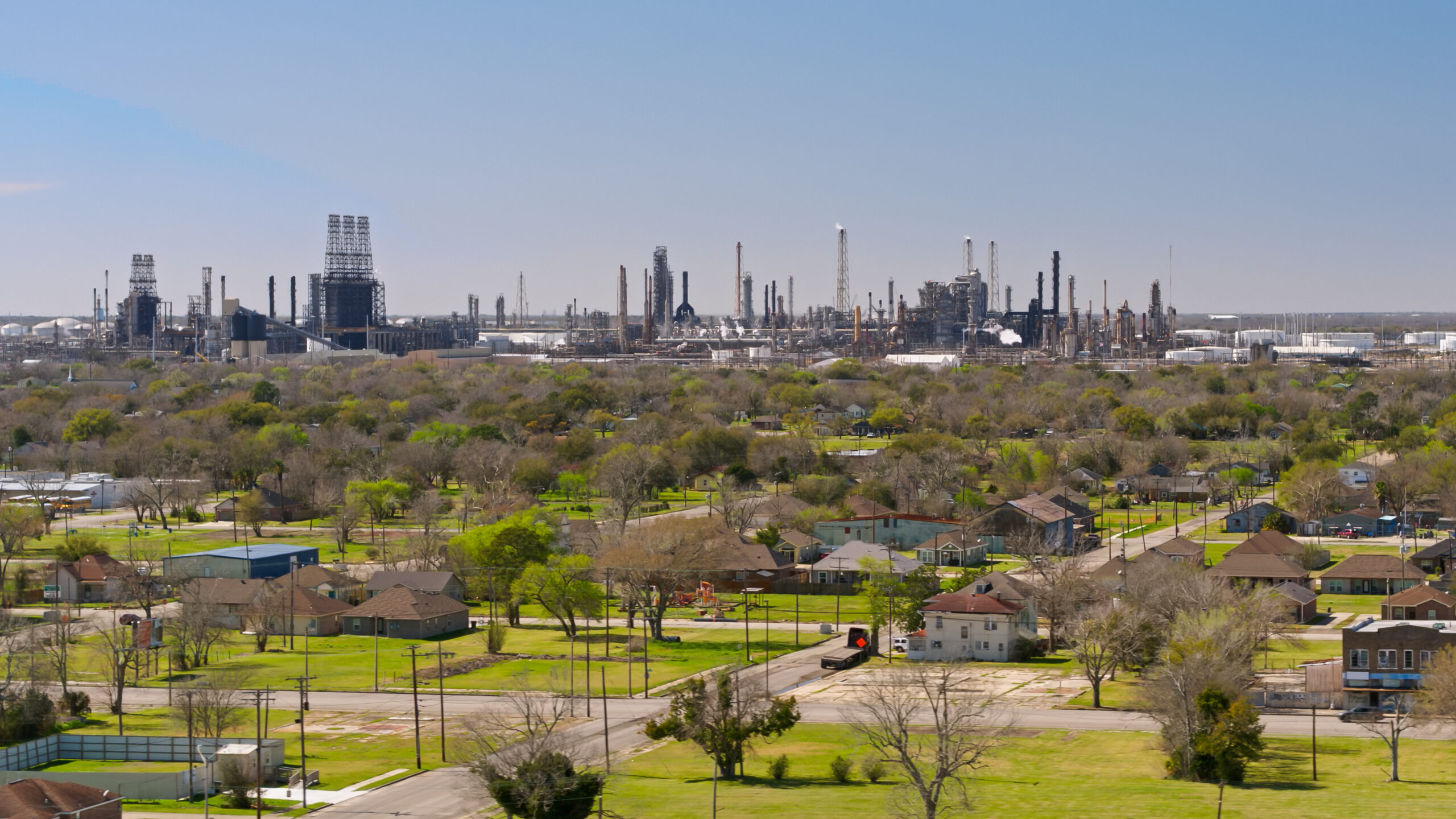The EPA has an opportunity to limit pollution and protect frontline communities.

This story was originally published by Grist and is sponsored by Environmental Defense Fund.
In Port Arthur, a small city located east of Houston along the Gulf of Mexico, a majority of residents live in close proximity to one of the 13 petrochemical facilities. For decades, residents have pushed back against blatant and unmitigated air and water pollution that has led to a host of medical problems.
One of those residents is John Beard, the founder, president, and executive director of the Port Arthur Community Action Network, as well as a former refinery worker. Beard explains that the industry exploits this allowance to pollute, affecting communities like his without concern for their lives. “We can’t simply stop breathing when they do these things,” Beard said.
Now, the Environmental Protection Agency, or EPA, has an opportunity to take action. Next spring, the federal agency will finalize its proposed regulations that may protect frontline communities like Port Arthur from petrochemical pollution. The proposed rules would strengthen monitoring standards and cut an estimated 6,000 tons of air pollution a year.
Petrochemical facilities are often clustered in low-income and communities of color along the Gulf Coast, which have long organized against the outsized impacts of pollution and exposure to carcinogenic chemicals. The industry is the largest commercial consumer of oil and gas, processing extracted resources into products like fertilizers, pesticides, soaps, and plastic products. As demand for oil and gas as a fuel declines, many companies are increasingly pivoting to petrochemicals—so advocates say strengthening and enforcing these rules is more important than ever.
“Historically, the regulation hasn’t matched the risk nearby communities live with every day,” said Dionne Delli-Gatti, the associate vice president of community engagement at the Environmental Defense Fund, a non-profit advocacy group. “We have seen under-regulation in the petrochemical industry for a very long time,” she added.
The rules, which EPA is expected to finalize in spring 2024, would help address the concerns of the communities who have borne the brunt of this pollution. It would mandate additional monitoring for six chemicals the agency has listed as a priority concern. The proposal would apply to 218 facilities nationwide, nearly 60 percent of which are located in Texas and Louisiana. This map includes the facilities impacted by the EPA’s proposed rule.
Advocates say to be effective, the new standards must guard against a loophole that allows for the release of toxic and carcinogenic chemicals when sites are starting up, shutting down, or during malfunctions. In 2008, a Washington, D.C. District Court ruled that these kinds of emissions exemptions were illegal. The EPA set 2016 as a deadline for states to revise their rules, eliminating this loophole. Yet many have ignored it. Creating a federal standard will help close that gap.
Currently, the petrochemical industry is allowed to operate with a certain degree of autonomy and secrecy. This is best illustrated through the pollution allowances built into the Clean Air Act. In the case of an extreme weather event, like a hurricane, a facility will release untold amounts of chemicals in order to relieve pressure or shut down. But this can happen during minor weather events too, like when Texas’ electrical grid is strained. Facilities themselves get to decide if a situation is an SSM event. And in some cases, petrochemical facilities will pollute more in a single SSM event than in an entire year of normal operations.
Earlier this year, a Grist investigation found that this loophole has permitted companies to release 1.1 billion pounds of unpermitted pollution since 2002. Grist concluded that there was a relationship between precipitation and windspeed, and the amount of pollution facilities released: A 1 percent increase in precipitation averaged a 1.5 percent increase in pollution, and a 1 mile per hour increase in windspeed led to a 0.6 percent increase in pollution. As extreme weather events become more common, advocates fear polluting companies’ emissions excuses will increase in frequency.
Earthjustice, on behalf of Environmental Defense Fund and 15 other environmental and community organizations, submitted technical comments to the EPA calling on the agency to finalize the strongest possible version of the rule. Grassroots organizations, community members and environmental leaders also voiced support for EPA’s proposal–many calling for the safeguards to cover a wider range of chemicals at more facilities throughout the country. Comments from residents living near polluting facilities are critical, said Delli-Gatti, as they offer a nuanced, first-hand perspective on the impacts of toxic pollution, and what can be done to address community needs.
One of the most important results from the new rules may be an increase in the transparency demanded of companies that pollute, Delli-Gatti said. The proposal would require air quality monitoring at the fence line of chemical facilities. Currently, these companies self-report data on what they’re polluting, often derived from estimates, rather than actual measurements. But these emissions are often underestimated. Monitoring at the facility fence line would provide one way to verify what’s actually being emitted into the air. She argues that more needs to be done to understand the risks people face when exposed to multiple sources of the same chemical, or to several chemicals at the same time–and to ensure that regulations truly protect people’s health. Simply put, advocates say there isn’t enough accurate data about what is being polluted into the air. “Understanding what those emissions are will be really important in knowing exactly what needs to be done,” Delli-Gatti.
Advocates in Houston are hoping that a strong EPA rule will encourage state environmental agencies to adopt stricter permitting and emissions protocols. In Texas, that means regulating facilities’ risk management plans so companies aren’t allowed to claim they’re protecting communities when they don’t, said Jennifer Hadayia, the executive director of Air Alliance Houston, an environmental justice organization.
For example, facilities will frequently burn off natural gas through a process called venting or flaring. Companies can say burning these chemicals is necessary to relieve pressure from fuel tanks quickly in order to manage risk. This releases huge amounts of methane — a major contributor to climate change and a driver of poor air quality — into the atmosphere. “Industry would like us to think that flaring is the risk management plan,” Hadayia said.
Beard says these kinds of excuses bely common knowledge about available alternatives. Reliable backup systems, for example, can reduce pressure of natural gas within the facility system and act as an alternative to venting and flaring. He says the current regulatory process is failing in its obligation to protect communities like his. Beard has recently filed two lawsuits in Texas, one raising objections to adding an additional pipeline to GoldenPass, a liquified natural gas plant in Port Arthur. He’s also filed a second lawsuit questioning the validity of air quality permit applications by Port Arthur LNG, a subsidiary of Sempra.
“We’re sick and tired of being sacrificed for the oil and gas industry to make billions,” Beard said. “We have a right to be able to breathe clean and free air.”



